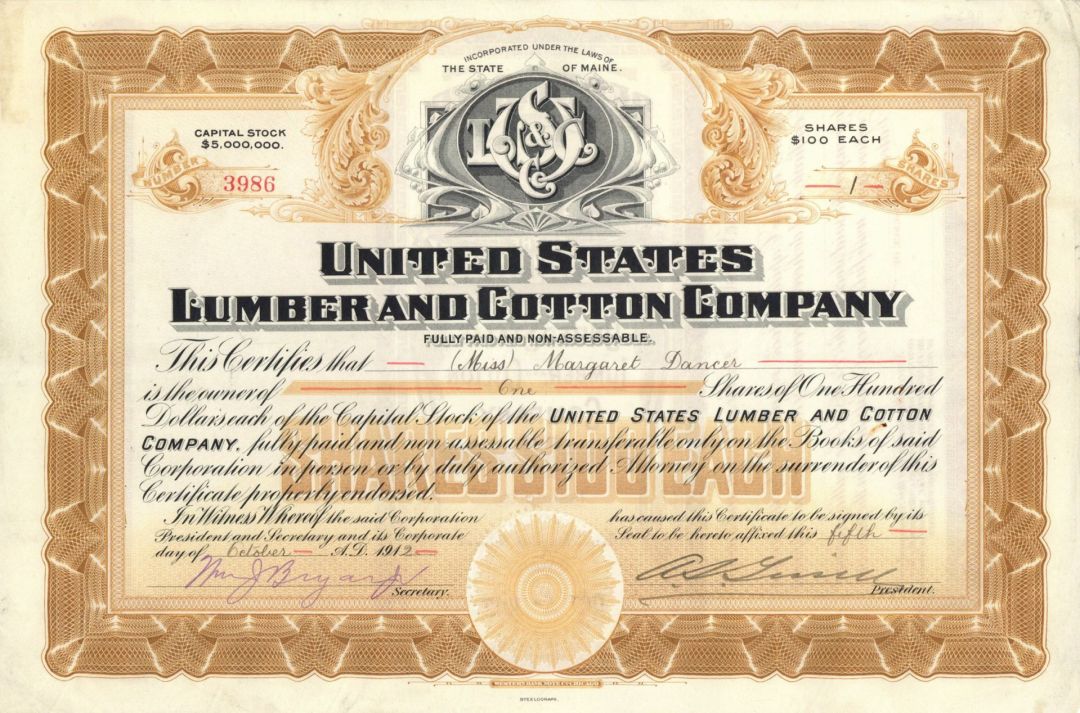United States Lumber and Cotton Co. - 1912-22 dated Stock Certificate
Inv# LS1004 StockStock printed by Western Bank Note Co., Chicago. Nice! The history of the lumber industry in the United States spans from the precolonial period of British timber speculation, subsequent British colonization, and American development into the twenty-first century. Following the near eradication of domestic timber on the British Isles, the abundance of old-growth forests in the New World posed an attractive alternative to importing choice timber from the Baltic via the narrow straits and channels between Denmark and Sweden. The easily available timber proved an incredible resource to early settlers, with both domestic consumption and overseas trade fueling demand. The industry expanded rapidly as Americans logged their way across the country. In this pursuit, hundreds of thousands of indigenous peoples were displaced, murdered, and enslaved for the purpose of the timber industry.
By the 1790s, New England was exporting 36 million feet of pine boards and 300 ship masts annually, with over 75 percent coming from Massachusetts (which included Maine) and another 20 percent coming from New Hampshire. By 1830, Bangor, Maine had become the world's largest lumber shipping port and would move over 8.7 billion board feet of timber over the following sixty two years. Read more at https://en.wikipedia.org/wiki/History_of_the_lumber_industry_in_the_United_States
A stock certificate is issued by businesses, usually companies. A stock is part of the permanent finance of a business. Normally, they are never repaid, and the investor can recover his/her money only by selling to another investor. Most stocks, or also called shares, earn dividends, at the business's discretion, depending on how well it has traded. A stockholder or shareholder is a part-owner of the business that issued the stock certificates.











Ebay ID: labarre_galleries